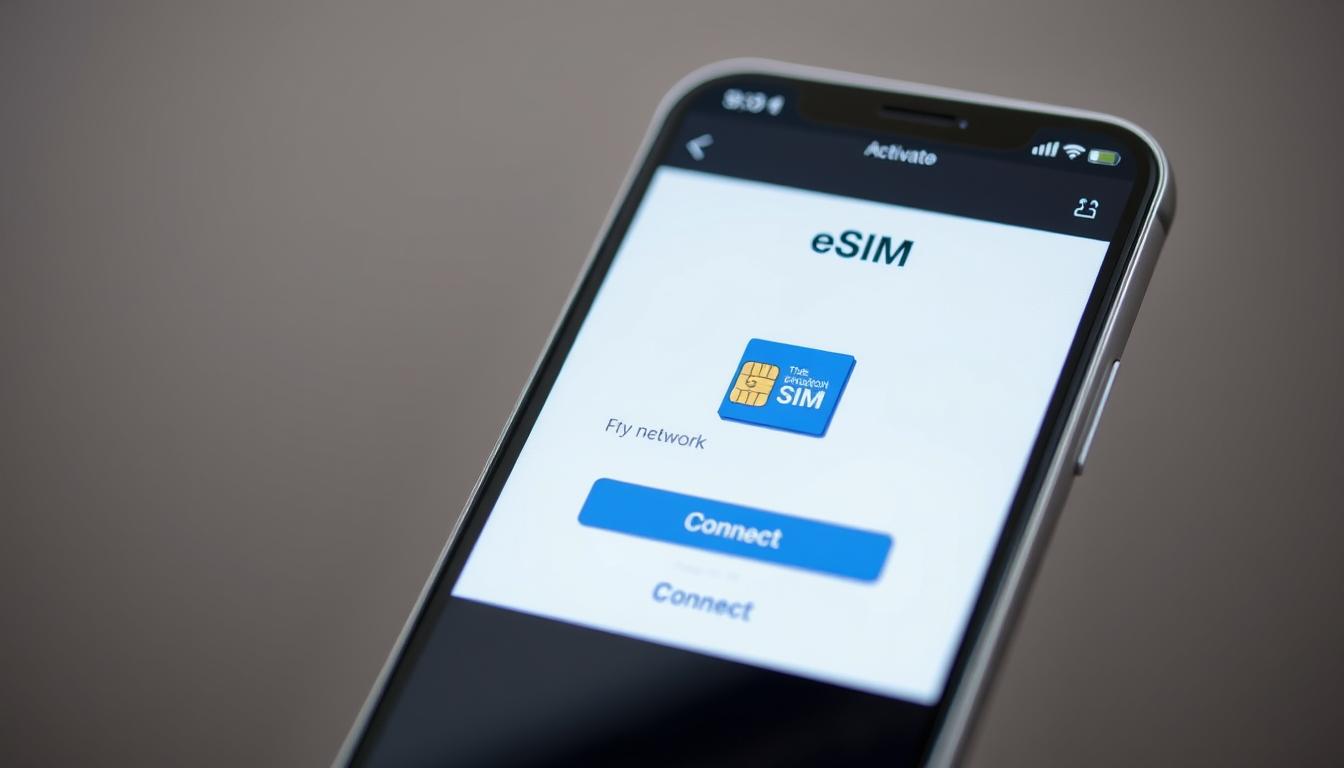Everything You Need to Know About eSIM Technology
 |
| Everything You Need to Know About eSIM Technology | Complete Guide |
eSIM technology is revolutionizing how we connect to mobile networks. This embedded SIM solution eliminates the need for physical cards while offering greater flexibility and convenience. Whether you're a frequent traveler, tech enthusiast, or simply looking to understand this innovation, this comprehensive guide covers everything from basic concepts to advanced applications of eSIM technology.
What Is eSIM Technology?
An eSIM (embedded SIM) is a small programmable chip built directly into your device, eliminating the need for a physical SIM card. Unlike traditional SIM cards that must be physically inserted and removed, eSIM technology works entirely through software, allowing you to activate and manage multiple cellular plans digitally.
This cloud-based technology stores your subscriber identity module information securely on your device. When you activate an eSIM, your device downloads a digital profile that contains all the information needed to connect to a specific mobile network.

eSIM technology eliminates the need for physical SIM cards by embedding the chip directly in your device
eSIM vs. Physical SIM Cards: Key Differences
eSIM Advantages
- Built directly into your device - no physical card needed
- Store and switch between multiple carrier profiles
- Activate new plans remotely without visiting a store
- Cannot be lost or damaged like physical SIM cards
- More space-efficient design in modern devices
- Environmentally friendly (no plastic waste)
Physical SIM Limitations
- Requires physical swapping to change carriers
- Can be lost, damaged, or stolen
- Limited to one carrier profile at a time
- Requires specific tools to insert/remove
- Takes up valuable space in device design
- Creates plastic waste with each replacement
How Does eSIM Technology Work?
eSIM technology functions through a combination of hardware and software components that work together to provide the same functionality as a physical SIM card, but with greater flexibility and convenience.
Embedded Hardware
The eSIM chip is permanently installed during device manufacturing. This tamper-resistant secure element stores your network authentication credentials and subscriber information.
Digital Profiles
Instead of physically changing SIM cards, eSIM technology allows you to download carrier profiles digitally. Each profile contains the information needed to connect to a specific mobile network.
Remote Management
 |
| Everything You Need to Know About eSIM Technology | Complete Guide |
Carriers can remotely provision and manage eSIM profiles through their servers. This allows for activation, deactivation, and updates without physical access to the device.
Device Compatibility: What Supports eSIM Technology?
eSIM technology adoption continues to grow across various device categories. Before switching to an eSIM, it's important to verify that your device supports this technology.
| Device Category | Examples of Compatible Devices | Notes |
| Smartphones | iPhone XS and newer, Samsung Galaxy S20 and newer, Google Pixel 3 and newer | Most flagship phones released after 2018 support eSIM technology |
| Tablets | iPad Pro, iPad Air, iPad (7th gen and newer), Samsung Galaxy Tab S7 and newer | Cellular models only; Wi-Fi-only models don't include eSIM |
| Smartwatches | Apple Watch (Series 3 and newer), Samsung Galaxy Watch (LTE models) | Cellular connectivity models only |
| Laptops | Microsoft Surface Pro X, Lenovo ThinkPad X1 Carbon (Gen 8+), HP Elite Dragonfly | Limited to select models with cellular capabilities |
| IoT Devices | Smart trackers, security cameras, connected vehicles | Growing rapidly in industrial and consumer applications |
Check Your Device Compatibility
Unsure if your device supports eSIM technology? Use our free compatibility checker to find out instantly.
Benefits of eSIM Technology for Different Users

For Travelers
eSIM technology is a game-changer for international travelers. Instead of hunting for local SIM cards or paying excessive roaming fees, you can purchase and activate a local data plan before you even arrive at your destination. This means instant connectivity the moment you land, with no need to swap physical SIM cards or visit a local store.
For Multi-Line Users
If you need to manage multiple phone numbers (personal and business, for example), eSIM technology allows you to store multiple profiles on a single device. With dual SIM functionality (combining eSIM with a physical SIM or using multiple eSIM profiles), you can easily switch between lines without carrying multiple phones.
For IoT Applications
The compact nature of eSIM technology makes it ideal for Internet of Things (IoT) devices where space is limited. From smart watches and fitness trackers to industrial sensors and connected vehicles, eSIMs enable reliable connectivity in a smaller form factor with remote management capabilities.
Perfect for International Travel
Get instant connectivity in over 190 countries with our global eSIM plans. No more hunting for local SIM cards or paying excessive roaming fees.
How to Activate an eSIM
Setting up an eSIM is typically straightforward, though the exact process varies slightly depending on your device and carrier. Here's a general overview of the activation process:

QR Code Method
- Purchase an eSIM plan from your provider
- Receive a QR code via email or in your account
- Go to your device's cellular or mobile data settings
- Select "Add Cellular Plan" or "Add eSIM"
- Scan the QR code with your device's camera
- Follow the on-screen instructions to complete setup
Carrier App Method
- Download your carrier's official mobile app
- Log in to your account or create a new one
- Select the option to activate an eSIM
- Choose your desired plan
- Follow the in-app instructions
- Confirm activation when prompted
Manual Setup Method
- Contact your carrier for eSIM details
- Go to your device's cellular settings
- Select "Add Cellular Plan" or similar
- Choose "Enter Details Manually"
- Input the SM-DP+ address and activation code
- Complete setup following on-screen prompts
Security Considerations for eSIM Technology
eSIM technology offers several security advantages over traditional physical SIM cards, though there are still important considerations to keep in mind.

Enhanced Security Features
- Tamper-resistant hardware: The embedded chip is designed to resist physical tampering attempts
- Cannot be physically stolen: Unlike removable SIM cards, eSIMs cannot be removed and used in another device
- Encrypted communications: Profile downloads and updates use strong encryption protocols
- Remote management: Carriers can remotely disable compromised eSIM profiles
Security Best Practices
- Use strong device passcodes: Protect access to your eSIM settings
- Only download profiles from trusted sources: Stick to official carrier channels
- Enable remote wipe capabilities: In case your device is lost or stolen
- Keep your device software updated: Security patches protect against vulnerabilities
The Future of eSIM Technology
eSIM technology continues to evolve rapidly, with several exciting developments on the horizon that will further transform how we connect to mobile networks.
 |
| Everything You Need to Know About eSIM Technology | Complete Guide |
Wider Adoption
As more device manufacturers embrace eSIM technology, we can expect it to become the standard across all mobile devices. Many industry analysts predict that physical SIM cards will eventually be phased out entirely in favor of the more flexible eSIM solution.
IoT Expansion
The Internet of Things (IoT) sector will see tremendous growth in eSIM adoption. From industrial sensors and smart city infrastructure to consumer wearables and home automation, eSIM technology enables more compact devices with reliable connectivity.
Integrated Experiences
Future applications will create seamless connectivity experiences across all your devices. Imagine your smartphone, watch, laptop, and car all sharing the same eSIM profile, automatically connecting to the best available network without any user intervention.
Frequently Asked Questions About eSIM Technology
Can I use both physical SIM and eSIM simultaneously?
Yes, many modern smartphones support dual SIM functionality, allowing you to use both a physical SIM card and an eSIM at the same time. This is particularly useful for keeping your primary number active while using a local data plan when traveling, or for maintaining separate personal and business lines on one device.
Will eSIM technology work in all countries?
eSIM technology itself works globally, but availability depends on local carrier support. Most developed countries have multiple carriers offering eSIM services, while adoption is still growing in some regions. Before traveling, check if local carriers in your destination support eSIM activation.
Can I transfer my eSIM to a new device?
You cannot directly transfer an eSIM profile between devices. When upgrading to a new device, you'll need to deactivate your eSIM on the old device and activate a new eSIM profile on your new device. Many carriers now offer streamlined processes to make this transition easier.
Is eSIM technology more expensive than physical SIM cards?
 |
| Everything You Need to Know About eSIM Technology | Complete Guide |
The eSIM technology itself doesn't typically cost more than physical SIM cards. In fact, for travelers, eSIM plans are often more affordable than international roaming charges. Pricing ultimately depends on your carrier and the specific plan you choose, not on the SIM technology used.
Embracing the eSIM Revolution
eSIM technology represents a significant leap forward in mobile connectivity, offering unprecedented flexibility, convenience, and security. As global adoption continues to accelerate, understanding how to leverage this technology can enhance your mobile experience whether you're a frequent traveler, business professional, or tech enthusiast.
The days of swapping tiny physical SIM cards, hunting for paperclips to open SIM trays, or visiting carrier stores for new cards are gradually becoming a thing of the past. With eSIM technology, managing your mobile connectivity becomes as simple as downloading an app or scanning a QR code.
Ready to Experience eSIM Technology?
Download our complete guide to setting up and maximizing eSIM technology on your devices. Get step-by-step instructions, compatibility lists, and exclusive tips.
